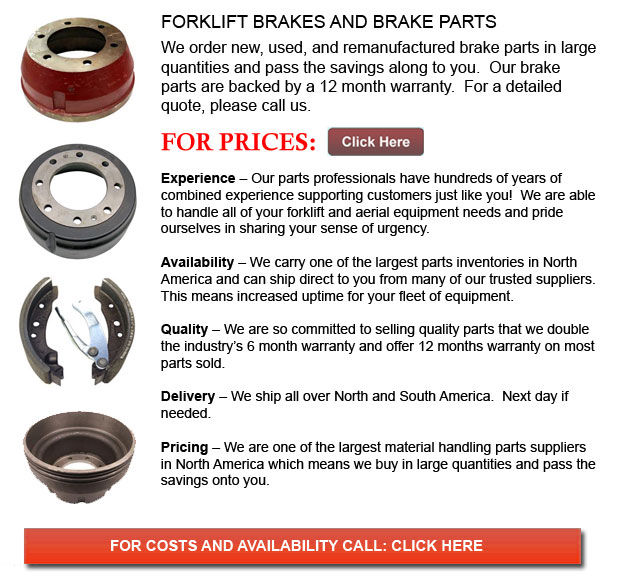
Forklift Brakes - A brake drum is wherein the friction is supplied by the brake shoes or brake pads. The pads or shoes press up against the rotating brake drum. There are some different brake drums kinds together with particular specific differences. A "break drum" will generally refer to if either shoes or pads press onto the inner outside of the drum. A "clasp brake" is the term utilized to be able to describe if shoes press against the outside of the drum. One more kind of brake, called a "band brake" uses a flexible band or belt to wrap all-around the exterior of the drum. Whenever the drum is pinched in between two shoes, it can be known as a "pinch brake drum." Similar to a typical disc brake, these types of brakes are rather uncommon.
Before nineteen ninety five, early brake drums needed constant adjustment regularly to be able to compensate for drum and shoe wear. "Low pedal" or long brake pedal travel is the dangerous end result if modifications are not done sufficiently. The motor vehicle can become hazardous and the brakes can become ineffective when low pedal is mixed along with brake fade.
There are quite a few different Self-Adjusting systems for braking accessible today. They can be classed into two separate categories, the RAI and RAD. RAI systems are built in systems that help the device recover from overheating. The most well known RAI manufacturers are Bendix, Lucas, Bosch and AP. The most famous RAD systems consist of AP, Bendix, Ford recovery systems and Volkswagen, VAG.
The self adjusting brake will typically just engage when the vehicle is reversing into a stop. This method of stopping is satisfactory for use whereby all wheels utilize brake drums. Disc brakes are utilized on the front wheels of motor vehicles today. By operating only in reverse it is less likely that the brakes will be adjusted while hot and the brake drums are expanded. If adapted while hot, "dragging brakes" could happen, which raises fuel expenditure and accelerates wear. A ratchet tool that becomes engaged as the hand brake is set is another way the self adjusting brakes may function. This means is only appropriate in functions where rear brake drums are utilized. If the emergency or parking brake actuator lever goes beyond a certain amount of travel, the ratchet advances an adjuster screw and the brake shoes move in the direction of the drum.
There is a manual adjustment knob situated at the base of the drum. It is generally adjusted via a hole on the other side of the wheel and this involves getting beneath the lift truck together with a flathead screwdriver. It is of utmost importance to be able to move the click wheel properly and tweak each and every wheel evenly. If unequal adjustment occurs, the vehicle can pull to one side during heavy braking. The most efficient method in order to ensure this tedious task is accomplished carefully is to either raise each and every wheel off the ground and spin it by hand while measuring how much force it takes and feeling if the shoes are dragging, or give every\each and every one the exact amount of clicks manually and then do a road test.
![]() Click to Download the pdf
Click to Download the pdf
Forklift Parts
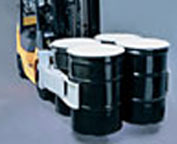
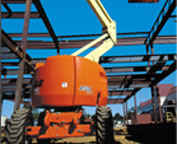
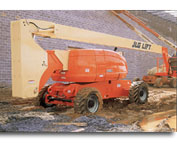
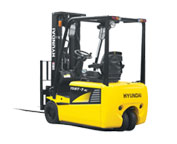
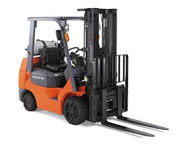
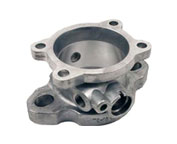
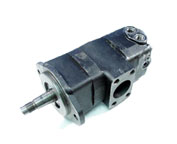
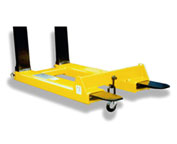
Lift Parts Express
TOLL FREE: 1-888-695-7994
Metairie, Louisiana
forkliftpartsmetairie.com
Email Us
About Us


